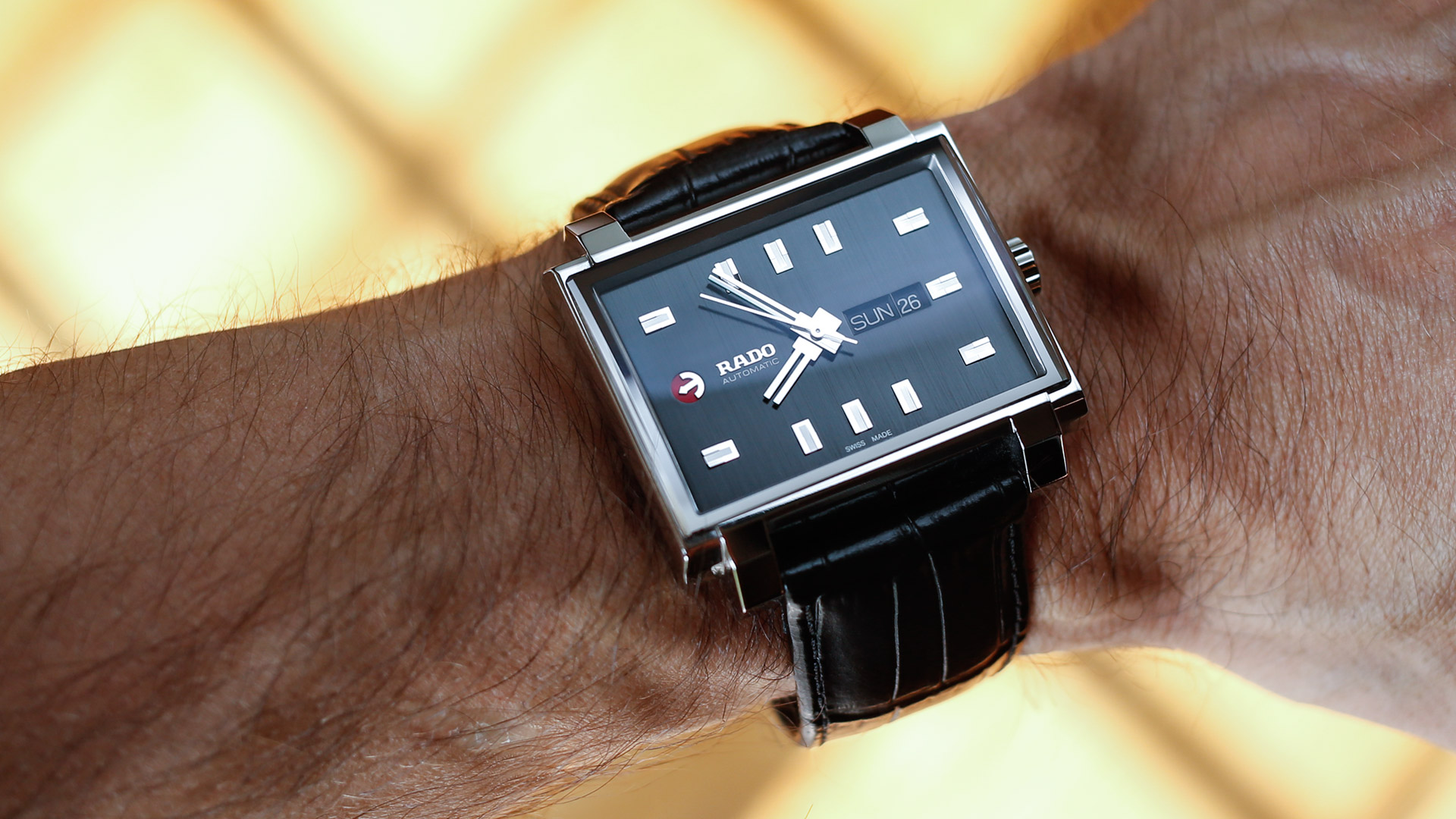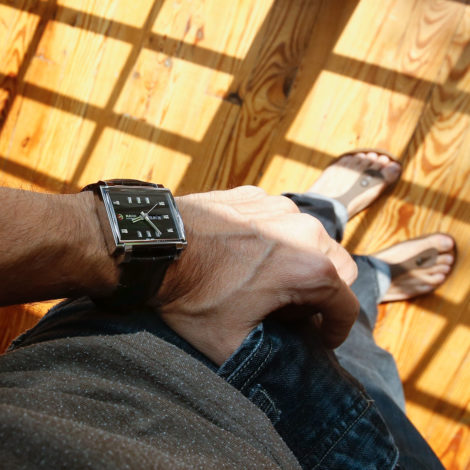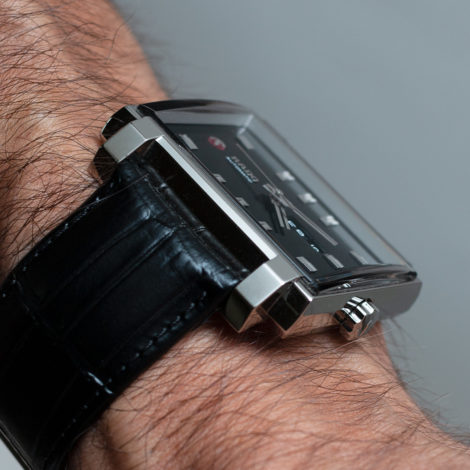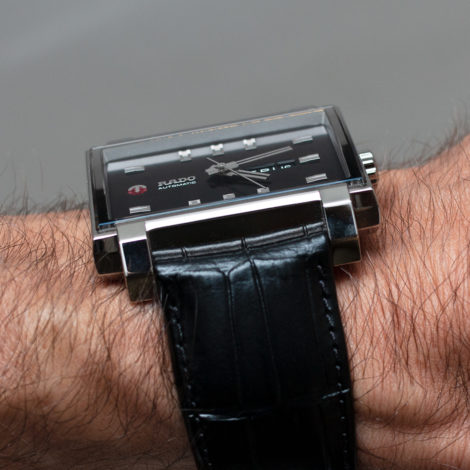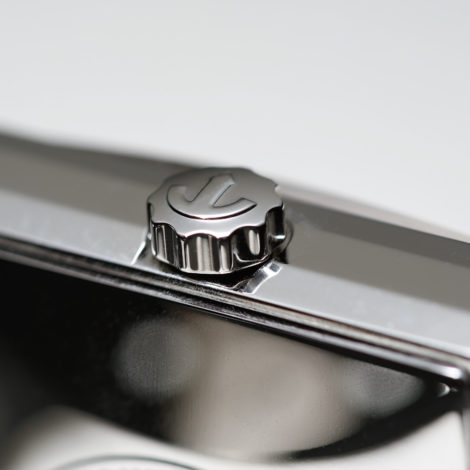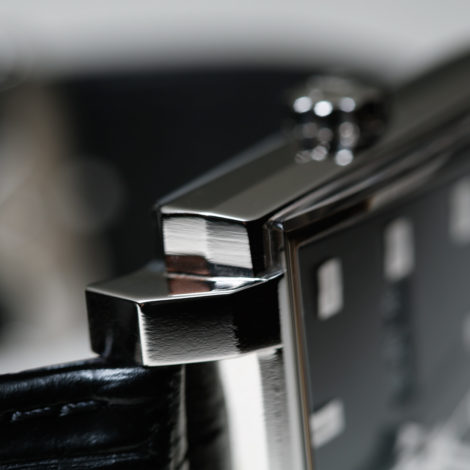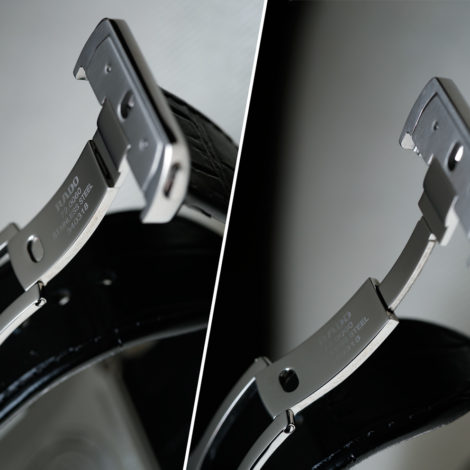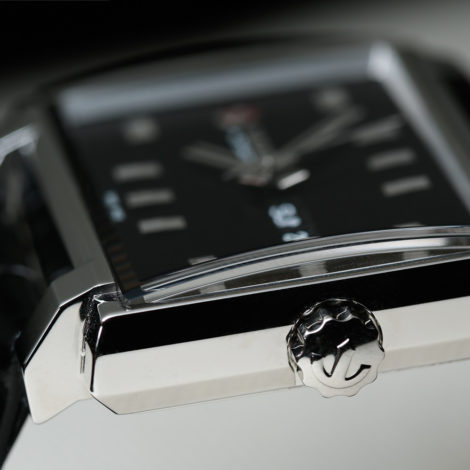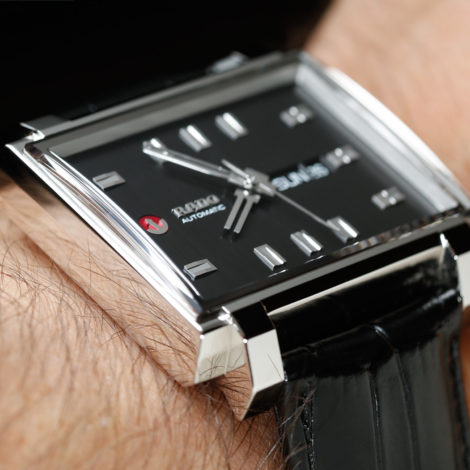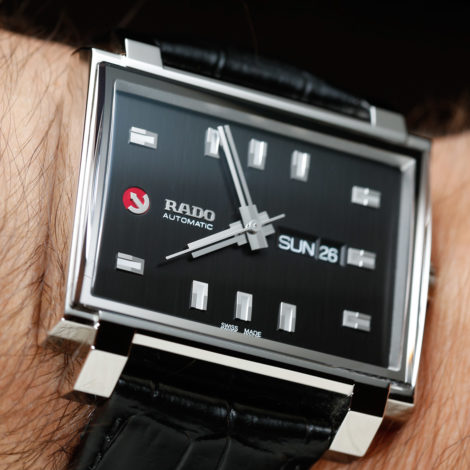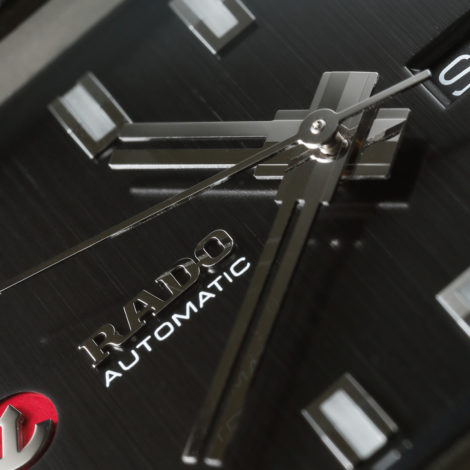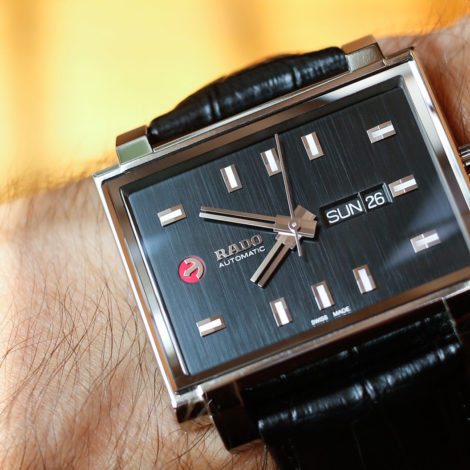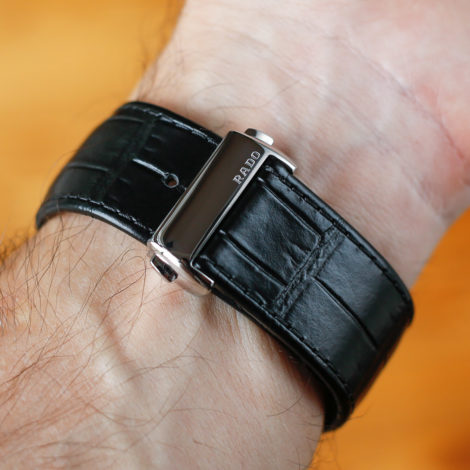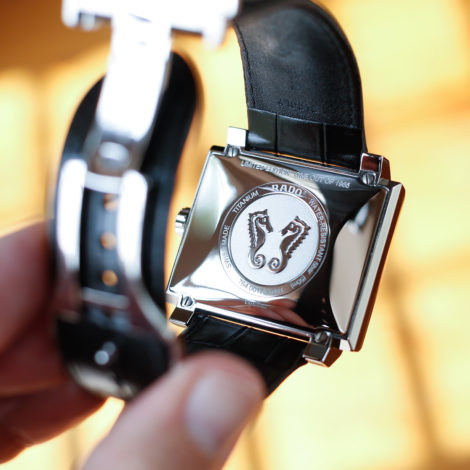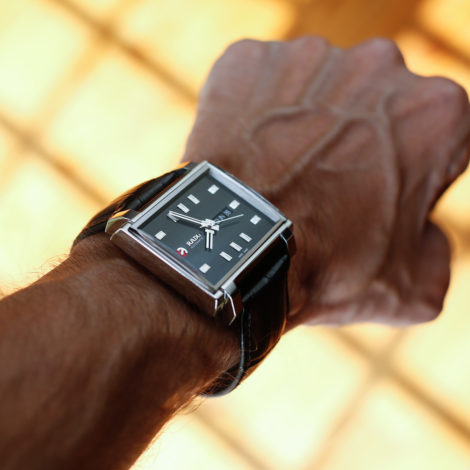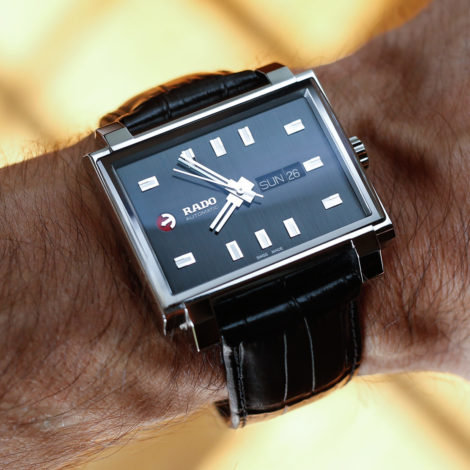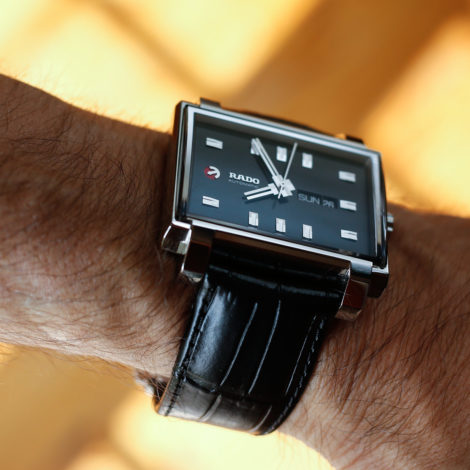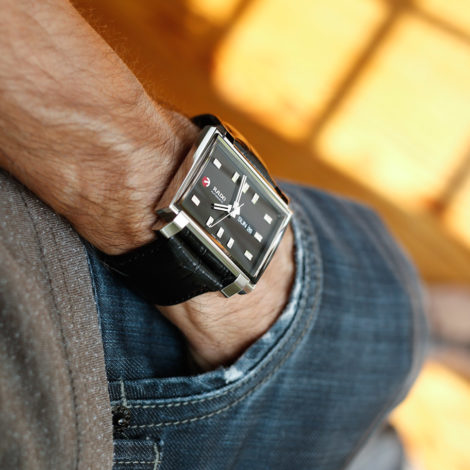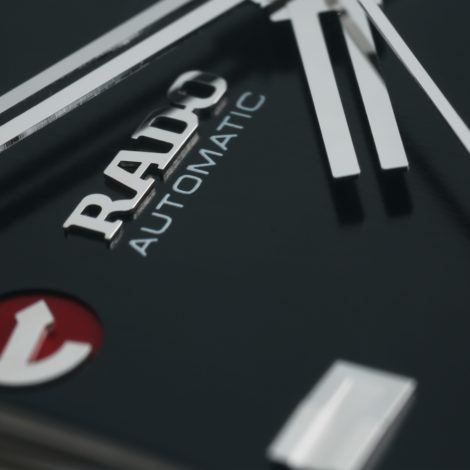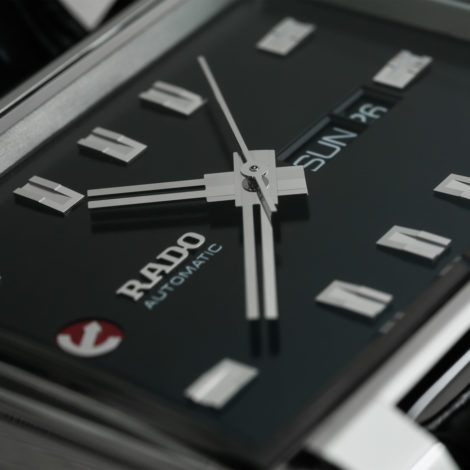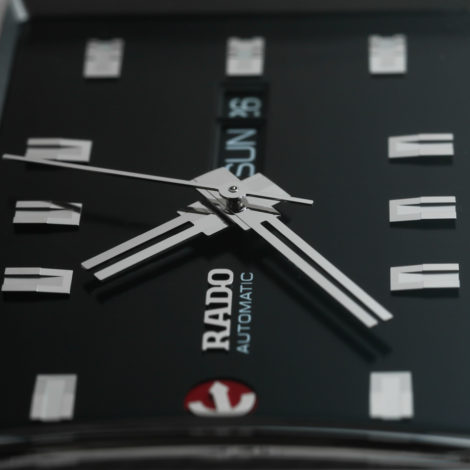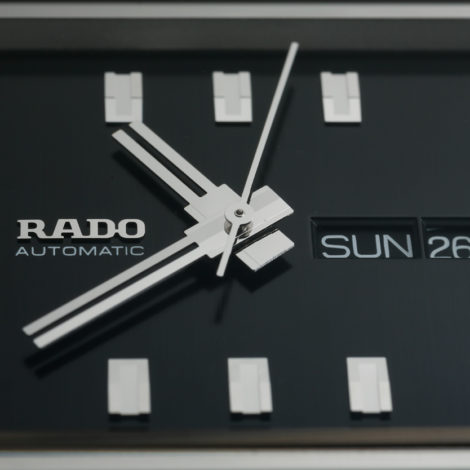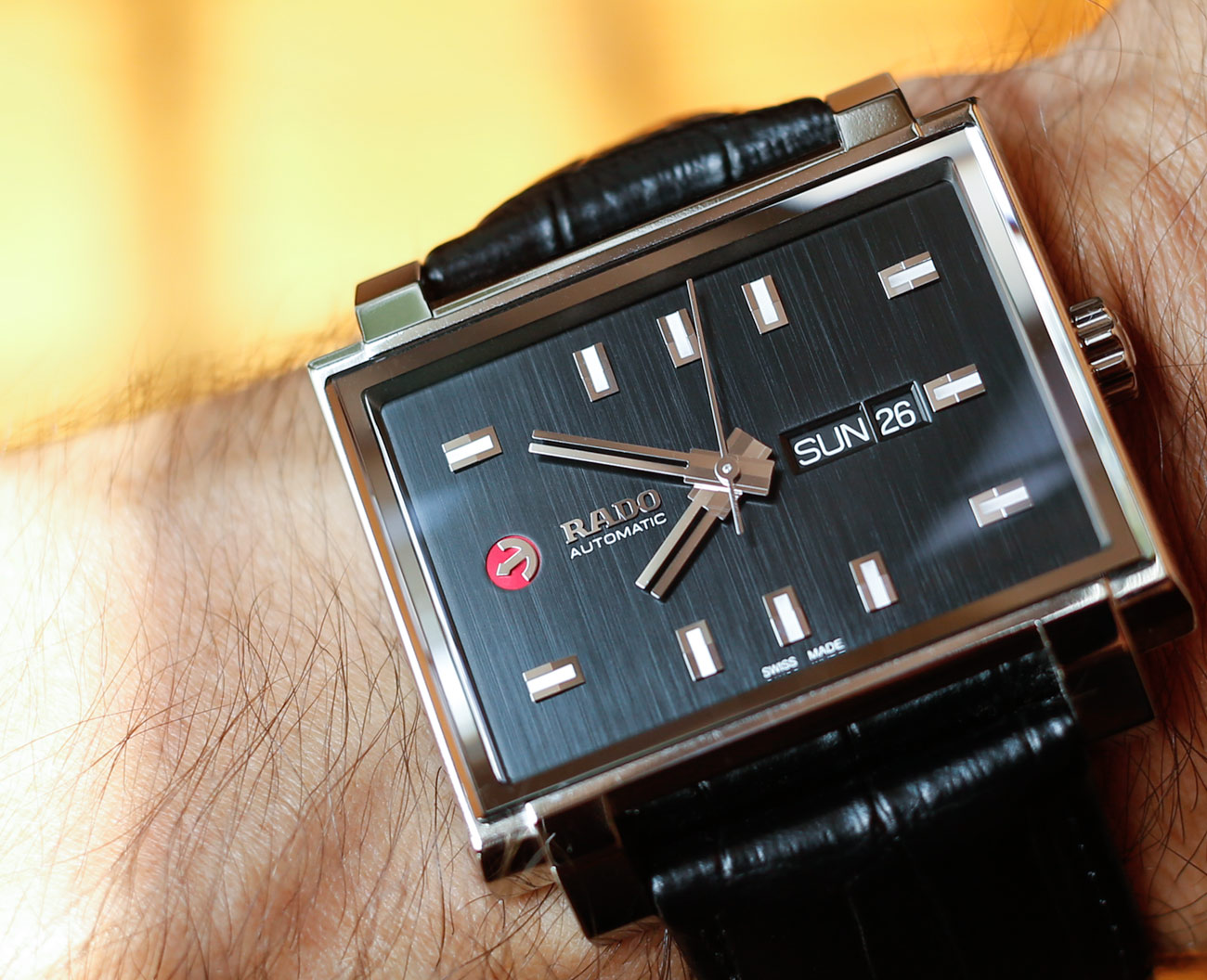
The Rado Tradition 1965 XL case features a lot of what we shall call angular architecture, but no sharp edges or points. Its square facets are echoed in the hands and applied indices all on a subtly brushed black dial. I had been waiting for the blocky hands and indices that were so popular in the ’60s to come back as part of the larger retro-revival, and indeed they have. Rado calls the style of hands “tuning fork.” They are definitely cool, in my opinion, and very legible despite the normally deadly combination of shiny hands and dark dial — strangely, photographing the watch, it was more challenging to capture the good legibility than in normal use, but I think I managed to convey the effect. It seems that everything about the Rado Tradition 1965 XL, from its wide dial to the notched shapes of its hands and indices, would have nicely accommodated a generous helping of lume. Unfortunately, Rado elected to use no luminant on the dial whatsoever.
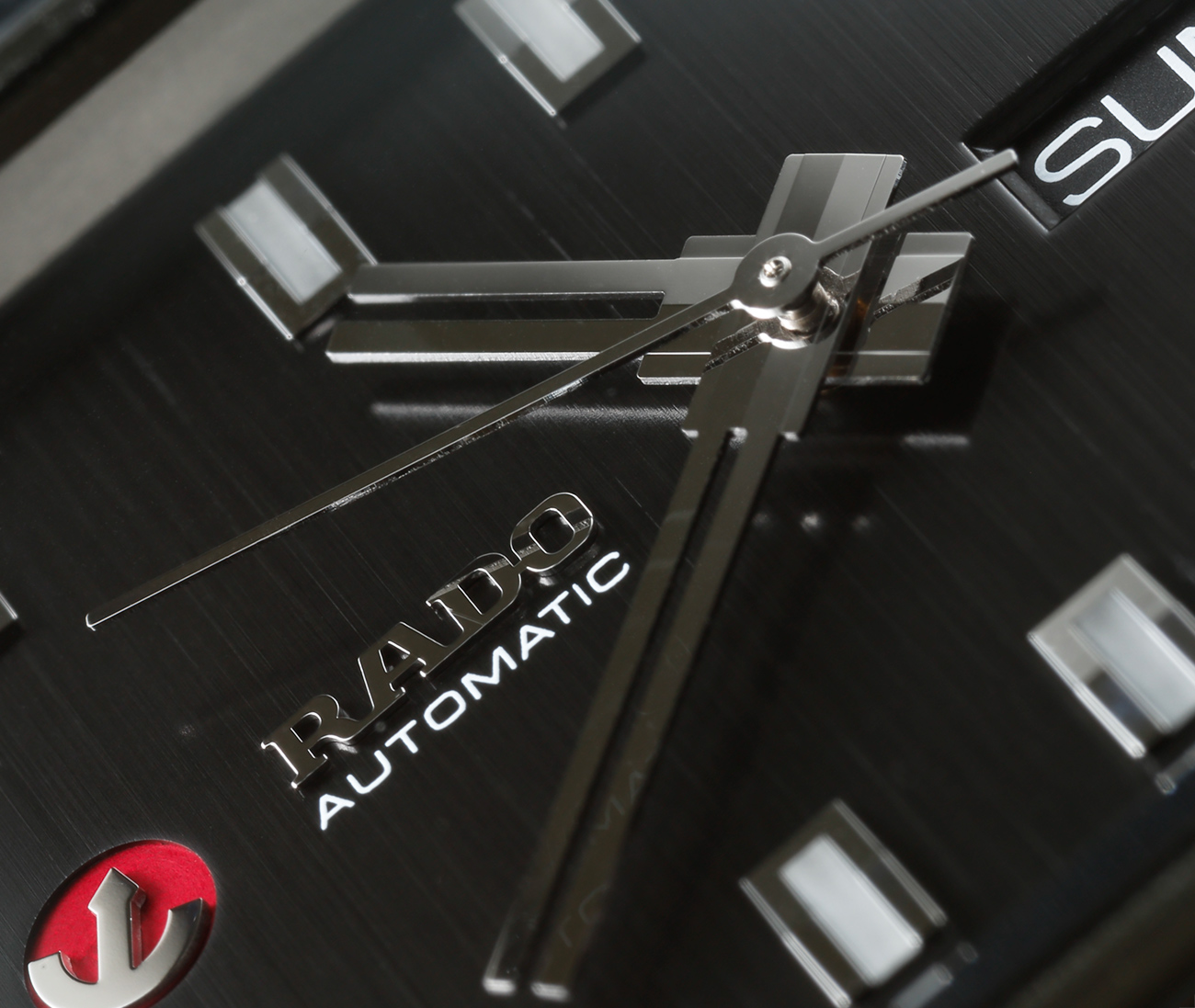
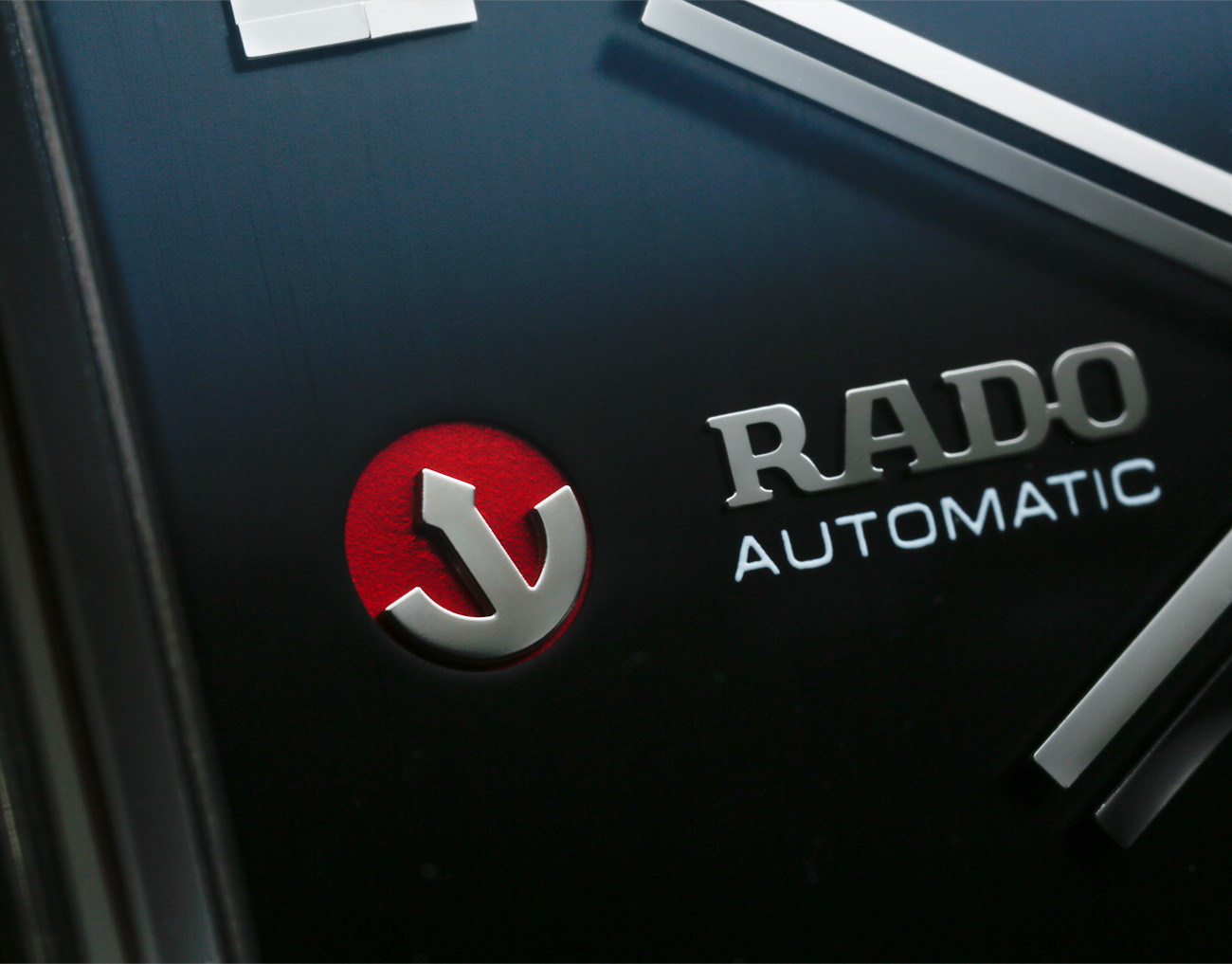
Rado has included day and date displays when many current watches are opting for no date display at all, but it feels appropriate for the Rado Tradition 1965 XL’s vintage mood. One more thing to note about the dial is the Rado logo with its rotating anchor. If you’re not familiar with it, many Rado watches include the anchor logo as a separate part and it moves around as the watch changes position like an automatic movement’s rotor — it is too light, however, to be constantly moving and rather only changes position from time to time. Speaking of automatic movements, the Rado Tradition 1965 XL is powered by the ETA C07.621 behind a solid caseback decorated with the Rado seahorse motif that has apparently been around for at least a few decades. The ETA C07.621 seems to be another name for movements seen across Swatch Group companies. ETA itself is, of course, under the Swatch Group, and similar movements have been called Powematic 80 in Tissot watches, H-10 in Hamilton watches, etc.
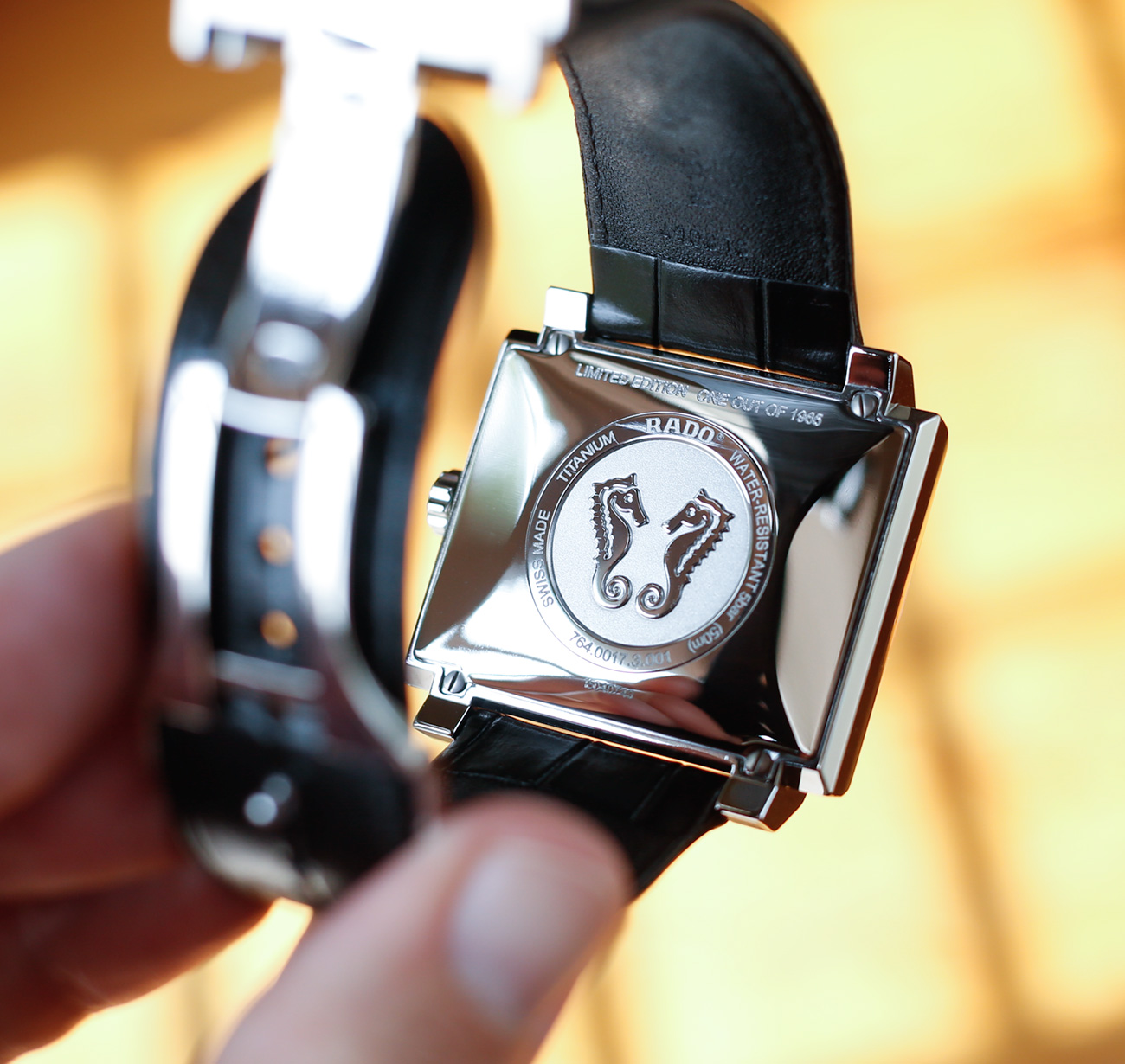
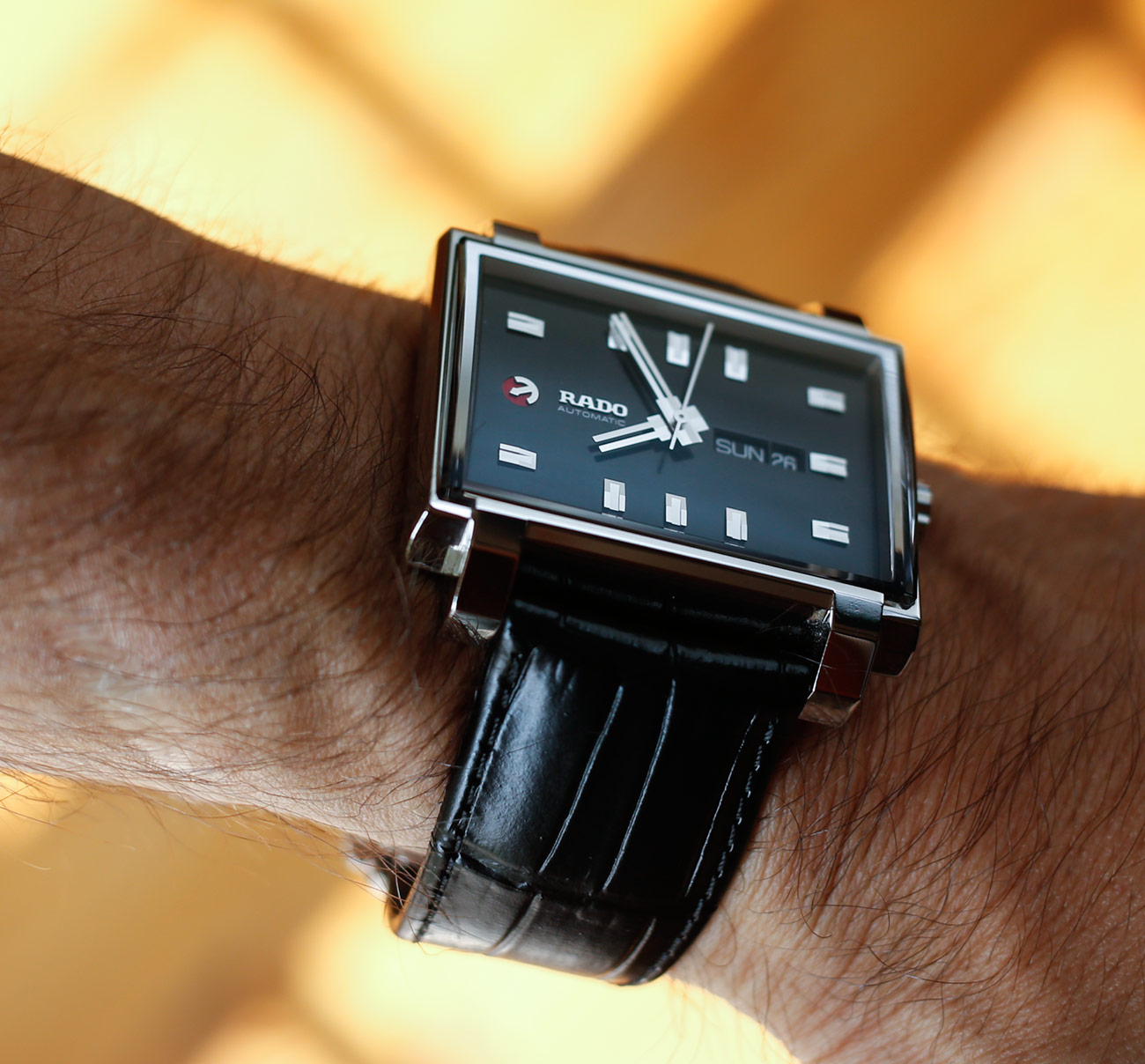
Most notable about the ETA C07.621 (or whatever you might call it) is its 80-hour power reserve. The ETA C07.621 is essentially a tweaked and refined version of ETA’s popular-to-say-the-least 2824 automatic movement. Some people have understood that this movement merely represents a tradeoff for the long power reserve by lowering the 2824’s frequency from 4Hz to 3Hz — and many have gone further to assume that this reduced frequency would cause accuracy to suffer. However, there is more to the movement than that, including refinements to components from the escapement to the barrel and mainspring, and at least some versions of it use a silicon balance spring. Some of these movements have even been certified to COSC chronometer standards, as in this Mido “Inspired By Architecture” watch, for example. As far as I can tell, it is only an upgrade to the the ETA 2824 movement, and even seems pretty economical to produce judging by the price of some watches it is found in.


As a total fanboy of the G-Shock 5000, 5600, and other such horizontally rectangular Casio watches, I’ve often wondered why the shape that seems to work so well for the plastic wonder watch hasn’t been more widely used. Well, while Casio makes it look effortless, perhaps it is not so easy to get right. In the case of the Rado Tradition 1965 XL, the relatively short lug-to-lug distance helps avoid overhang, but it still more or less takes over my bony 6.5″ (17cm) wrist. It sometimes felt more like a wrist-mounted weapon from some sort of Japanese cartoon than a watch that was merely telling you the analog time.
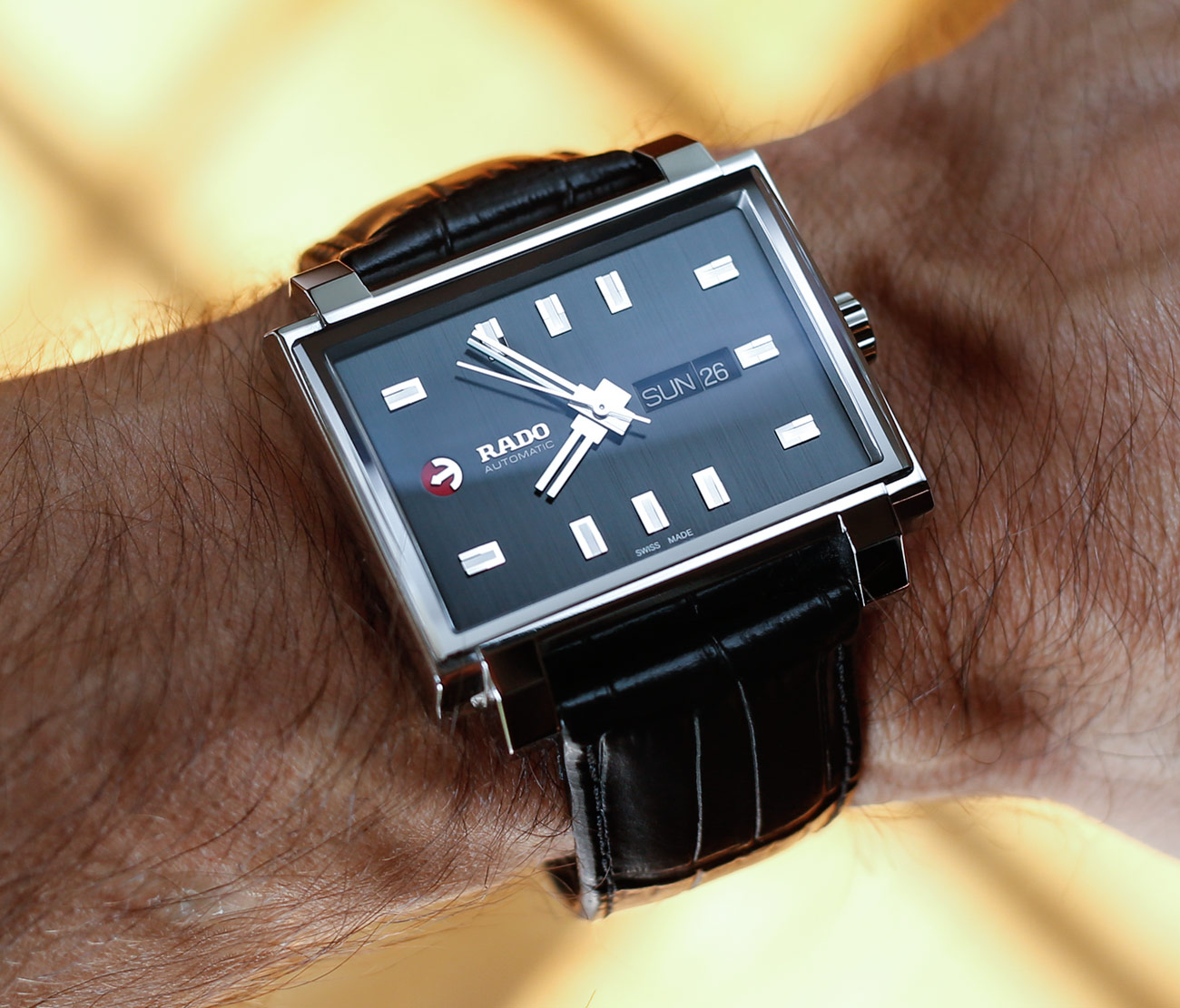
To make the Rado Tradition 1965 XL work best, you either want your watch to be very noticeable or for it to be in proportion with tree-trunk sized wrists. So trying it on is advisable, maybe along with the Rado Tradition 1965 M (as opposed to the XL) which is 35mm by 35mm and available with a blue or white dial. The Rado Tradition 1965 XL reference 764.0017.3.120 as reviewed here is limited to 1,965 pieces with a price of $2,350 each. rado.com
Necessary Data
>Brand: Rado
>Model: Tradition 1965 XL reference 764.0017.3.120
>Price: $2,350 USD
>Size: 45mm wide, 45mm lug-to-lug, 11.8mm thick
>Would reviewer personally wear it: Not often.
>Friend we’d recommend it to first: One into the funky ’60s style and with large wrists. Maybe one who likes to show off “luxury lifestyle” on Instagram pairing watches with leather shoes, cigars, etc.
>Best characteristic of watch: Overall high quality is evident, surprisingly good legibility. It’s genuinely unconventional, I can say that.
>Worst characteristic of watch: Too darn big or awkwardly shaped for my wrist/taste.

